Introduction
Garlic mustard is the perfect storm of noxious weeds. It rapidly invades through self-pollination, high seed output and seeds that can last ten years. It is allelopathic, meaning it releases chemicals in the soil that prevent germination and growth of other plant species. Garlic Mustard also interrupts important soil fungal relationships with trees that help protect them from drought, disease, and beetle kill.
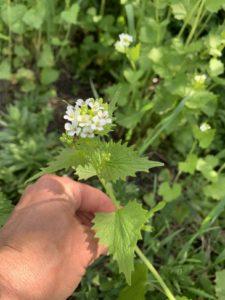
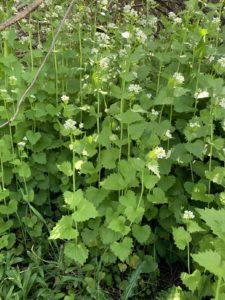
The plant’s pretty, white flowers lull landowners into thinking it is a native but can become the dominant species within 3-5 years. It has displaced native plant species that wildlife and pollinators rely on and threatens forest health. Garlic Mustard is known to be present in at least 34 states in the United States and covers over 500 acres of land in Summit County alone. Garlic Mustard is mainly found in shaded areas of forests and shrublands and along waterways.
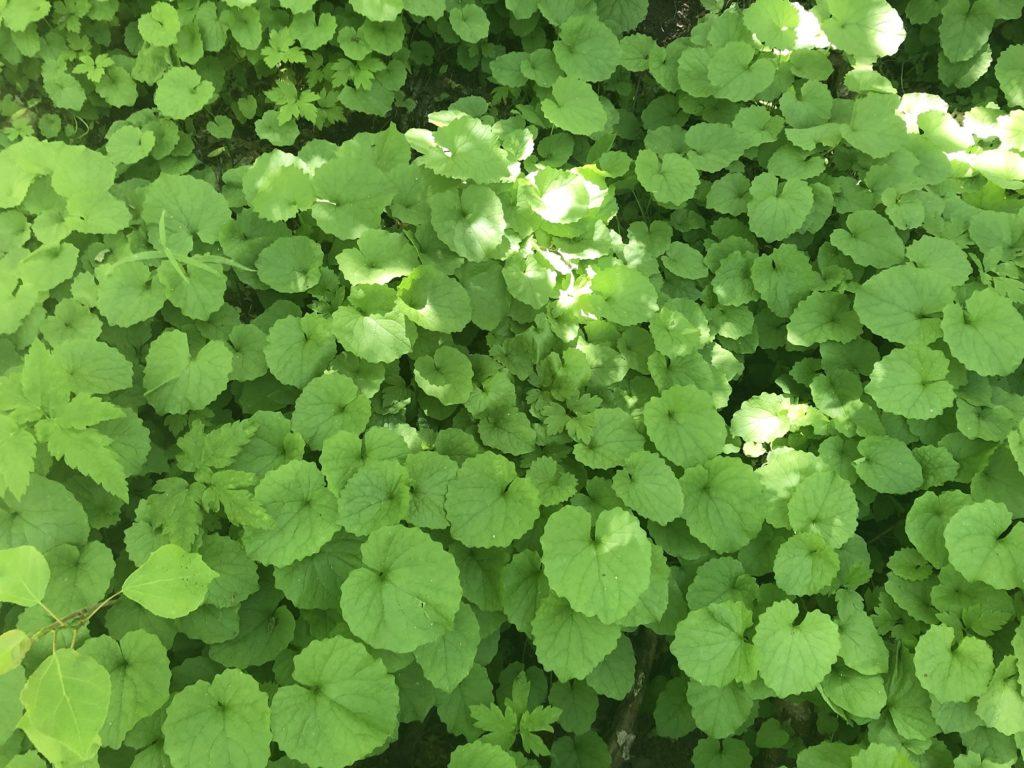
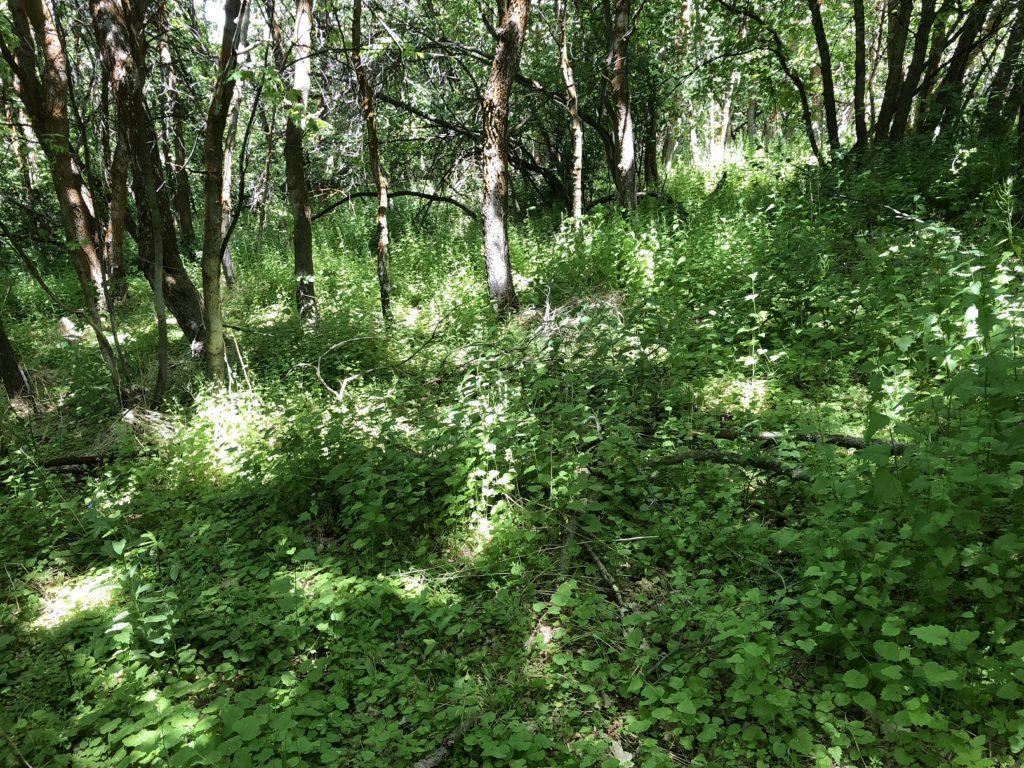
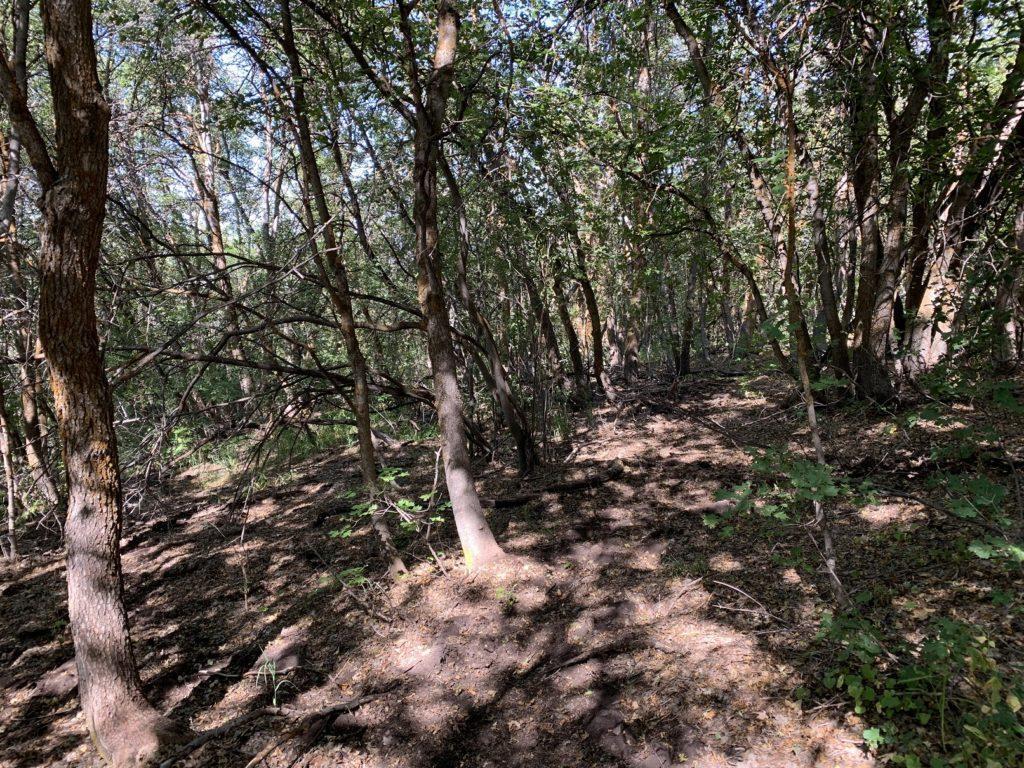
Control Efforts
Control of this species is critical to forest preservation, water quality and fire prevention. Through outreach, mapping, monitoring, hand weeding, herbicide, and habitat restoration, we are gaining some control of this damaging weed.
Efforts to map and control this Class 1B species began over 10 years ago and relied heavily on herbicide. As our capacity as a partnership and available grant funds increased, we have been able to more regularly integrate other methods of control. Because the Summit CWMA strongly believes in using an integrated approach that is guided by current science, we are using many methods and running trials to see if we can find methods that are equally if not more effective with reduced potential for unintended impacts.
Garlic mustard is a biennial, meaning it will form a rosette in the first year and grow tall, flower and produce seed in the second, then die. This species can germinate many times in a single year. To treat multiple garlic mustard germination events each season, treatment occurs spring to early summer and again in the fall as funding allows. However, due to garlic mustard’s ten-year seedbank, control efforts must occur consecutively in each location for more than ten years to eradicate the species.
At any one time, there can be a complete layer of garlic mustard rosettes under a dense canopy of flowering garlic mustard. A few years ago, we noticed that this layer of rosettes often was not significantly impacted by herbicide application because the flowering canopy was so thick the herbicide didn’t reach the lower plants. This caused herbicide treatments to only be 50-60% effective. We decided to test whether using hand weeding to thin out the flowering plants would increase the success of herbicide and reduce the populations more rapidly. After a couple of years of thinning flowering plants, we were seeing a significant reduction of garlic mustard in the densest areas. Because hand weeding is expensive, we can’t implement it everywhere or be detailed enough to pull every flowering plant, but thinning the flowering plants is feasible for some properties. This is particularly true when residents take the time to pull flowering plants
DuraCor Trials
In some areas, there are populations of garlic mustard that cover 10-40 acres of land and much of it is nearly 100% garlic mustard. When garlic mustard is this thick and covers such a large area, the costs of hand weeding even just to thin the plants is prohibitive. Instead, we control along the known edges of the population to keep it from spreading and hope we will eventually shrink the population. But this means the seeds inside this large populations are piling up and treatment will be increasingly difficult.
The Summit CWMA partnered with Corteva and Summit County to test pre-emergent herbicide, DuraCor. The main benefit of DuraCor, if it works on garlic mustard, would be that it could be sprayed once over a three year period rather than the current approach of six times (2 times annually for three years). DuraCor treatments with and without hand weeding and with applications in spring versus fall were applied. The test results showed spring treatments of DuraCor reduced garlic mustard when used alone (75% reduction) and used in combination with hand weeding of second year plants (93% reduction). Fall treatments were nearly 100% effective with hand weeding showing no additional benefit. We will continue to monitor the trials through the fourth year after treatments and are hopeful our data will help support the use of this herbicide for dense patches of garlic mustard and reduce overall herbicide use by 83%.
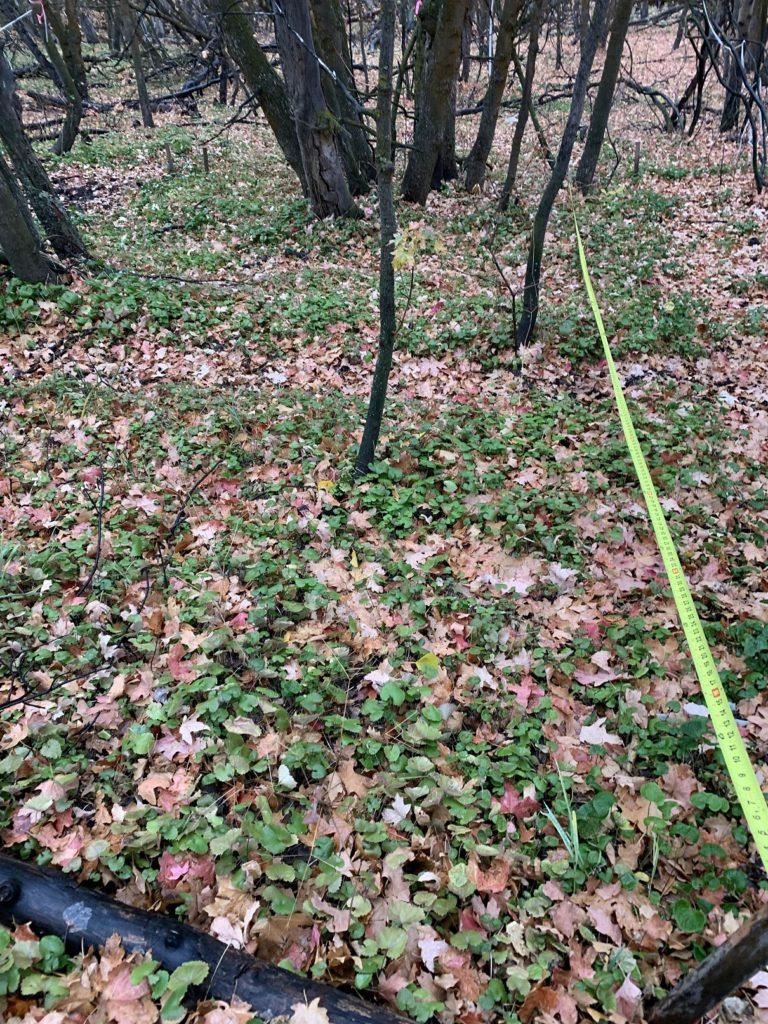
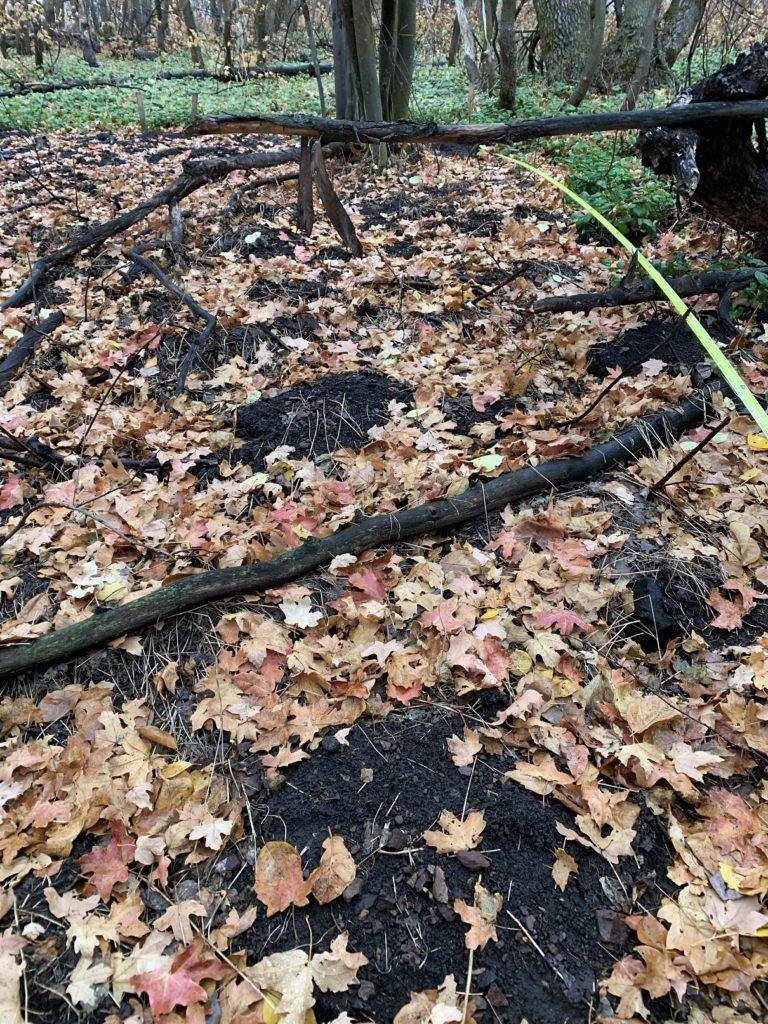
Seeding Trials
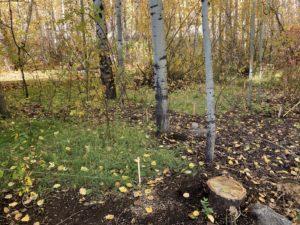 After so many years of control efforts, there are areas that the garlic mustard is now low in cover where in the past it dominated, however, native plants were still not recovering. Was this because the garlic mustard impact on the soil was still preventing plants from germination or was garlic mustard dominant so long, there wasn’t enough native seed left in the soil to recover. We set up plots using soil amendments (compost or compost with biochar) to kick start soil recovery and native grass seed mixes. Early results indicate that the native seedbank was likely poor and that soil moisture was a problem for seedlings in these bare ground scars left from garlic mustard invasion and control. In fall of 2021, we established additional plots to verify our results and further tease out which methods will be most effective for future restorations.
After so many years of control efforts, there are areas that the garlic mustard is now low in cover where in the past it dominated, however, native plants were still not recovering. Was this because the garlic mustard impact on the soil was still preventing plants from germination or was garlic mustard dominant so long, there wasn’t enough native seed left in the soil to recover. We set up plots using soil amendments (compost or compost with biochar) to kick start soil recovery and native grass seed mixes. Early results indicate that the native seedbank was likely poor and that soil moisture was a problem for seedlings in these bare ground scars left from garlic mustard invasion and control. In fall of 2021, we established additional plots to verify our results and further tease out which methods will be most effective for future restorations.
Volunteer Weed Pull Events/Competitions
Hand weeding is an expensive control method so to make its use more financially feasible, the Summit CWMA turns to the Community for help. Given the desire of the Summit CWMA to use an integrated approach and the success of the combined hand weeding followed by herbicide treatment approach, we knew we needed to find a way to incentivize greater volunteer turnout. Early on, a bounty was placed on garlic mustard such that residents could be paid a few dollars per bag of garlic mustard. This approach increased participation but had its limitations. The most limiting of which was the number of bags we received that had things other than garlic mustard in it.
In 2020, the Summit CWMA held its first competition that combined weed pull events with ongoing hand weeding of garlic mustard over a two-week period. The competition was held along the Armstrong Trail and was therefore called the Armstrong Challenge. Participants were entered into opportunity drawings during the first and second week and the volunteers that pulled the most garlic mustard in each of those weeks won prizes from local businesses and well know outdoor brands. Both locals and tourists participated. Over 1,000 pounds of garlic mustard were removed in just two weeks and several participants learned about garlic mustard for the first time.
In 2021, the Summit CWMA upped the anti with the help of the Park City Community Foundation Climate Fund. We expanded the competition to all of Summit County. The event was renamed the Garlic Mustard Games and official garlic mustard pull events were held throughout the summer and across the known distribution of garlic mustard in Summit County. Participants learned about the impact of garlic mustard and how hand weeding can be one tool to control it. To incentivize participation, even more drawings were held, and teams competed for the grand prize of a food truck party. The competition led to the removal of nearly 2000 pounds of garlic mustard.
Late summer rains of 2021 have stimulated the germination of garlic mustard all over its known populations which suggests 2022 could have more flowering plants than we have seen in years. It is the hope of the Summit CWMA that we will be able to make the Garlic Mustard Games an annual event and continue to double the pounds of garlic mustard removed each year.
Community Outreach –
Native Pollinator and Honeybee Health Program
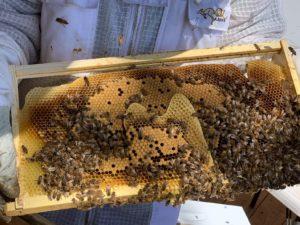 While weed pull events and competitions have been an effective way to reach the public, most people still do not know that it is the legal obligation of all property owners to control noxious weeds on their property, what plants are noxious weeds, the negative impacts of these weeds and how to control them. In addition, misinformation about noxious weeds, herbicides and pollinators were interfering with control efforts and leaving the community frustrated and arguing. The Summit CWMA partnered with the State Apiary Inspector (Joey Caputo), USU Extension and the Swaner EcoPreserve to hold webinars in 2020 to provide science-based information presented by experts. Participants learned about the many impacts of noxious weeds from increased fire risk to reduced forage for pollinators. All participants received packets of native, pollinator friendly wildflower seed and additional community members were given the same wildflower seed in exchange for weeding noxious weeds from their property. Beyond removing noxious weeds, the program opened a dialog within the community that shifted the focus from misinformation to impactful actions. The Summit CWMA continues to provide native grass and wildflower seed to residents that are removing their noxious weeds.
While weed pull events and competitions have been an effective way to reach the public, most people still do not know that it is the legal obligation of all property owners to control noxious weeds on their property, what plants are noxious weeds, the negative impacts of these weeds and how to control them. In addition, misinformation about noxious weeds, herbicides and pollinators were interfering with control efforts and leaving the community frustrated and arguing. The Summit CWMA partnered with the State Apiary Inspector (Joey Caputo), USU Extension and the Swaner EcoPreserve to hold webinars in 2020 to provide science-based information presented by experts. Participants learned about the many impacts of noxious weeds from increased fire risk to reduced forage for pollinators. All participants received packets of native, pollinator friendly wildflower seed and additional community members were given the same wildflower seed in exchange for weeding noxious weeds from their property. Beyond removing noxious weeds, the program opened a dialog within the community that shifted the focus from misinformation to impactful actions. The Summit CWMA continues to provide native grass and wildflower seed to residents that are removing their noxious weeds.





